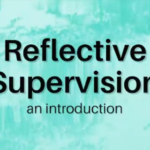As you’re creating your website and after it’s up and running, there are some best practices to follow to ensure that it serves as a vital resource for both members and seekers:
- Update your website regularly. The fastest way to get people to stop coming to your website is to stop updating it, so create a plan to ensure that doesn’t happen. Designate someone (ideally a staff person, but a committed volunteer would work) to update the website on a weekly (or bi-weekly) basis. This includes uploading new sermons, newsletters, and events, as well as updating photos and information as things change—like worship times and children’s ministry offerings, which are likely different during and outside of the school year. If you don’t designate someone to attend to the website, it is likely to get pushed down on the priority list and neglected.
- Make worship and church contact information prominent. A primary reason people visit church websites is to learn when worship is and how they can participate—whether in-person, online, or both. Put that information at or near the top of the home page, and be sure to include a link to online worship if there is one. Similarly, don’t forget to make sure your church’s physical address, phone number, and office email are easy to find and always accurate.
- Make staff accessible. Help seekers get a sense for who your leaders are through bios and photos, and make it easy for those with questions to contact staff by phone or email. That accessibility communicates welcome, warmth, and transparency.
- Use photos, not clip art. One of the best ways to make your website look modern and professional is through high-quality photos. Ideal is if you showcase various aspects of your congregational life—worship, small groups, children’s ministry, outreach events, etc. But there are a variety of great websites where you can download nice photos for free. Check out Unsplash, Pixabay, Canva, and Pexels to start.
- Have a section for newcomers: It’s a good idea to have an “I’m New” section to tell prospective visitors everything they might want to know about the church and what they can expect for worship—for example: the church’s key beliefs and mission statement, how people dress, what’s available for kids (including where they go for Sunday school, what’s taught, and who’s in charge), service options/styles, and style of music and teaching. If there’s a visitors’ desk or welcome center, you could also invite them to stop by.
- Make sermons accessible: As potential visitors explore your website to get a taste of your church before visiting, one of the things they will likely be most interested in is recent sermons; members who aren’t able to attend in-person worship often want to be able to hear the sermon too. Make it easy to locate and watch or listen to them.
- Make online donating easy. In this online era, make it simple and easy for people to donate to your church through your website to maximize your giving potential. A good website will have a prominent donation button and make online giving a breeze. Ideally, people will be able to make a one-time gift or set up recurring payments.
- List upcoming events: Especially at this time when so many people are worshiping online, make your website the go-to place to learn about upcoming events and opportunities. This also gives potential visitors a glimpse of what you offer. Many churches put their entire newsletter online, usually in the form of a PDF; this is certainly better than nothing, but more ideal is typing event information directly into an “Events” section of your website so that it’s easier to find and doesn’t require clicking and scrolling to figure out what’s coming up.
- Optimize your web pages for search engines. You can have the most functional and attractive website in the world, but if no one can find it, it doesn’t really matter. Use titles, descriptions, URLs, and keywords strategically so that people searching Google will come across your website. Learn about how to do this.









